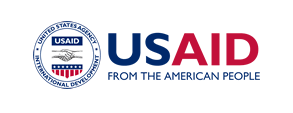The Health Policy Project ended in 2016. Work continued under Health Policy Plus (HP+) until 2022.
Software and Models

Health Policy Project
Resources
Search Publications

The GAP Tool (Gather, Analyze, and Plan) is a simple Excel-based tool designed to help policymakers, ministry officials, health officials, and advocates understand and plan for the costs associated with expanding family planning (FP) to achieve their country's contraceptive prevalence or fertility goals.
In 2001, non-governmental organizations (NGOs), donors, multilateral agencies, private institutions, and other advocates came together in Istanbul, Turkey, to formulate concrete actions to address growing demand and funding shortfalls for family planning supplies in developing countries. The Reproductive Health Supplies Coalition was formed to manage the global response to a looming global contraceptive supply challenge. There is wide recognition that the 2001 Donor Funding Gap* prepared by Futures Group for the Istanbul meeting served as a key advocacy tool to bring attention to FP supply issues and provided crucial evidence at the global level.
A decade later, countries are taking increasing ownership of the family planning agenda. Funding decisions are coming under country purview with basket arrangements and direct budget support mechanisms. The focus of interest has also shifted from supplying current users to a broader interest in meeting unmet need for family planning. Global analyses of funding requirements for family planning are no longer sufficient in this environment. Information at the country level is urgently needed to ensure that family planning programs are fully funded as the shift in agenda and ownership takes place.
GAP, developed by the Health Policy Project, is a strategic planning tool to help frame the right "ask" at the country level by linking a country's family planning goals with what it will cost to reach those goals. The two main outputs produced by the tool are the country's funding gaps for a national family planning program and for family planning commodities. By making direct and indirect costs explicit and tying strategic goals to budgets, the GAP Tool offers further opportunity for countries and donors to monitor and track progress in family planning programs.
*Note: For the 2009 donor funding gap update, please click here.

